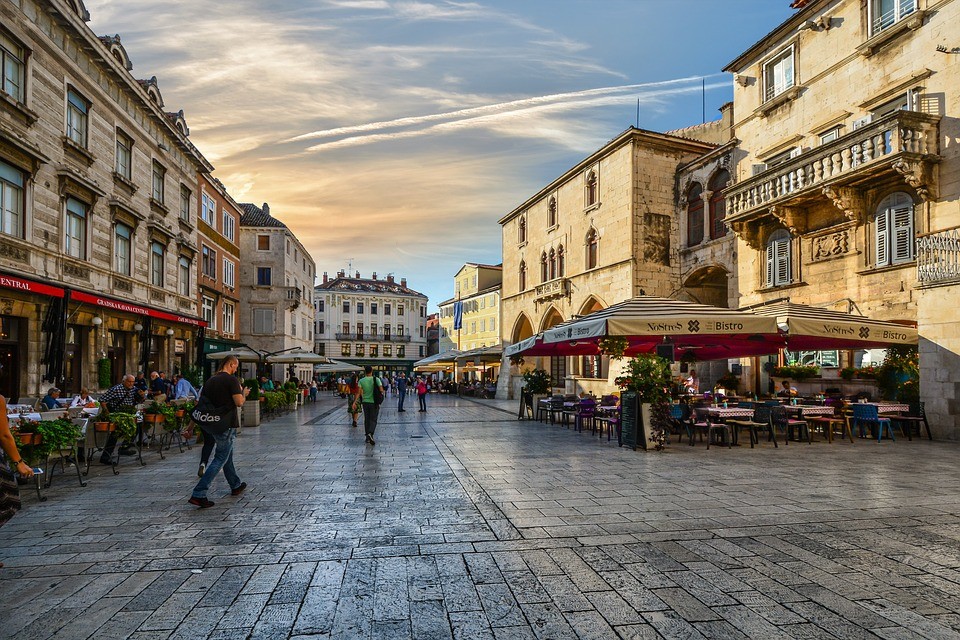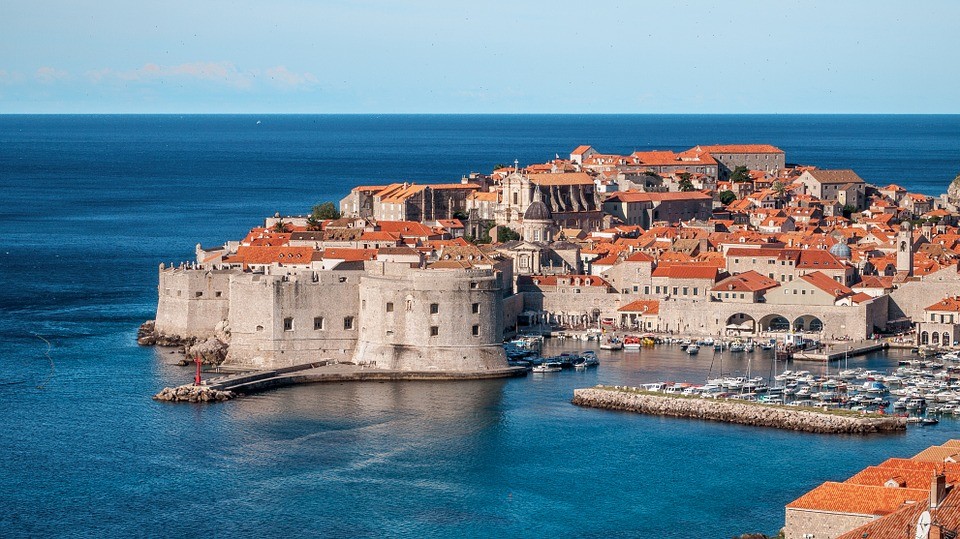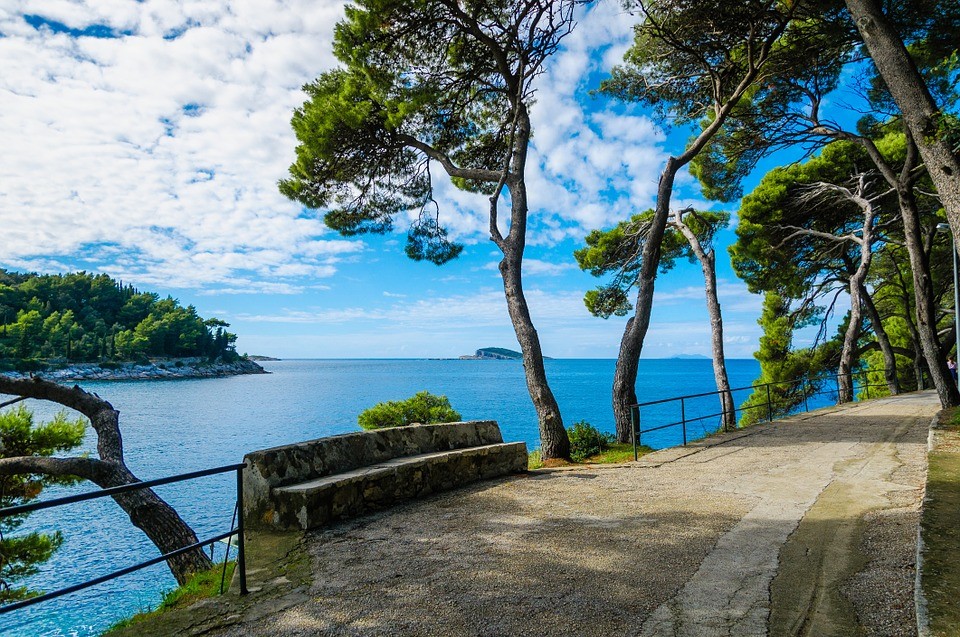An Introduction to Croatia

Hello everyone. I have the pleasure of starting a new blog and a new trip today. And it's all about Croatia, I've mentioned Dubrovnik before in other blog entries that coincided with the cruise, but a few months ago I had the opportunity to visit Croatia and I want to let you know all about everything I've managed to compile from my notes, memories, moments and places. In this first introductory blog, I'm going to put everything down for you. Croatia has enchanted me, and I have not been able to avoid soaking up its history, its people, its customs and its cultures. Croatia is located half way between the Balkans and Central Europe and to an extent, it has suffered a love-hate relationship with the European Union and its neighbours. Croatia was invited to join the UN Security Council in January 2008 and its NATO membership began on 1st April 2009, however disputes with the EU over fishing laws which have provoked displeasure among European representatives, and the already elusive accession date was delayed until the summer of 2013, just when I was in Dubrovnik.
In March 2008, the trial against Ante Gotovina began who was the general during the war and whose arrest in 2005 was the main prerequisite for the beginning of talks regarding Croatia joining the EU. Gotovina was accused of participating in a “joint criminal enterprise” to expel the Serbs from Krajina in 1995. Revered and still considered a hero by many people in his native region of Zadar, it was headline news.
During my time in Croatia I observed that there were deep concerns regarding judicial reforms, the fight against corruption, and an improvement of conditions for the establishment of private companies within the country, that although were continuing to improve, were requirements to be fulfilled at the time in order to enter the EU. However, life for the average Croatian remains difficult; the average salary, of around 800 euros, is not enough to support a family and despite the falling unemployment rate, it remains high (11. 18%).

However, the Croatian economy is improving; its GDP is experiencing sustained growth, mainly due to the continued increase in tourism and the development that comes alongside it. The country has managed to avoid a massive urbanisation and preserve its beauty (with only a few exceptions) meaning that travellers return to visit. New luxury hotels are emerging every year, especially in Hvar and Dubrovnik, as well as smaller and more modest options, or rural tourism especially in Istria.
Likewise, Croatia has achieved sporting success, winning the Handball World Championship in 2007 and reaching the quarterfinals of the 2008 European Championships by defeating Germany, although they lost to Turkey on penalties. During the 2012 Eurocopa they didn’t get past the group stages as it was just their luck to be drawn against both Spain and Italy. Due to Croatia’s economic growth, sporting successes, great bars, restaurants, films and also music festivals, alongside their desire to improve sustainable development and infrastructure, it seems that Croats are saying: “We are already members of the EU, and we want more”. Croatia’s core data shows a population of 4. 5 million, half the population of the Spanish region of Andalusia and that its main trade partner is Italy. Additionally, life expectancy in Croatia is 71 for men and 78 for women.
Surely all you travellers already know that Croatia is a very popular destination, especially in summer. Its luxurious hotels, modest family friendly B&Bs and its campsites on the seafront are filled with both national and international visitors, especially during the high season (July and August). During the high season, you should book accommodation in advance, especially if you want to stay on one of the islands. In both spring and autumn there is far less visitors and Croatia’s attractiveness increases with empty beaches, a wide range of available accommodation and museums that remain empty and quiet. However, the high season does have its advantages: everything stays open late, transport is more frequent, there are ferries and catamarans faster and more often and it’s the best time of the year for those seeking fun and beach parties. Out of high season, taking ferries to the islands can be complicated with infrequent connections. Whereas in July and August there is a fuller and more flexible timetable than from September to June.

When could we go?
Although the high season in Croatia is in July and August, the coast is magnificent in spring and at the start of autumn. In April the Adriatic Sea is still too cold to swim but you can try on a warmer day in May, especially in the centre and south of the Dalmatia. In September the water temperature can reach up to 23°C. Unlike the temperature of the sea, accommodation prices fall nicely out of high season.
In spring and autumn cities such as Zagreb are in full cultural effervescence: you can attend the Zagreb Contemporary Music Biennial, the Zagreb Film Festival, various street festivals or the Quer Zagreb FM Festival. May and June are great months for outdoor activities, except skiing (of course). During this time the accommodation prices are still reasonable and the days are long and sunny. Between the end of May and the beginning of June it is the time for end-of-year school trips; you may find lively masses of students everywhere, and the hotels and transport in the main areas of cultural interest may be full of boisterous young people and their stressed chaperones. July and August are the most expensive months to visit the country; prices skyrocket, the most popular places, hotels and restaurants are crowded and beaches, some overcrowded, can be noisy. The main advantage of travelling in high season is that transport to the islands is much more frequent.
September is maybe the best month to visit Croatia. The sea and the weather are warm, there are less people and everything is cheaper; and also, fans of Mediterranean fruit can feast on the abundance of figs and pomegranates. October is another popular month and both Croats and foreigners take the opportunity to truly take a break; it’s too cold for camping but the weather is still good on the coast and accommodation is both fairly cheap and available.

But, the important thing is… is Croatia expensive or cheap?
Croatia isn’t a cheap country. In other words, those who stay in a hotel, especially the new, ostentatious and renovated ones, will find that the comfort and price are similar to that of other European destinations. A cheaper alternative is hostels, private homes or campsites. Accommodation prices, boat tickets and everything that relies on tourism skyrocket during summer, peaking in July and August. In high season whatever the cost of a double room in a private residence, it will cost around twice that price in a three-star hotel and forget about staying in a boutique hotel! The most expensive places are Dubrovnik and Hvar, where the most luxurious hotels can be found and where most tourists tend to go. Rooms in Zagreb and in mainland Croatia usually cost roughly the same all year round and accommodation in the Slaonia and Zagorje regions is not as expensive as on the coast and in the capital. Bear in mind that rooms usually charge 30% more for stays of under three nights and in high season some do not accept stays of under seven nights. It is always worth confirming in advance. Hotels do not usually require a minimum stay. Renting a car in Croatia is incredibly expensive compared to its European neighbours, even Montenegro or Bosnia and Herzegovina. For those, like me, who enjoy culture, we are in luck in Croatia, tickets to museums, theatres and concerts are reasonably cheap, around a few euros for museums and less than 8 euros in theatres and concerts. Transport by boat is also cheap, unless you take a car with you. The average fare for an intercity bus ride is almost more expensive than visiting a museum. You can eat a pizza for a few euros and a pasta dish is often fairly cheap even in high-priced restaurants. Meat, fish and other foods are priced similar to the rest of Europe. Backpackers who want to stay in somewhere can spend less than 20 euros a day. To stay overnight in a pleasant private room, eating in average restaurants will cost you an average price whereas travelling along the coast will be more expensive if you’re staying and eating in the best hotels and restaurants. It’s better for families and groups of friends to rent an apartment instead of staying in a hotel. An apartment per night for three people on the coast is reasonable. In a good restaurant you’re likely to pay an average price if you have something substantial. You usually have to pay for break and some restaurants add on a service charge, which will be mentioned on the menu. Fish and shellfish are more expensive and the price is usually calculated on weight. One serving weighs about 250g, but sometimes a whole fish is available on the daily offer. You can ask the waiter to weigh it in order to calculate the final cost.
We’ll have an update shortly! All the best!
Photo gallery
Content available in other languages
- Español: Croacia Introducción
- Français: La Croatie : Introduction
- Italiano: Introduzione sulla Croazia
Want to have your own Erasmus blog?
If you are experiencing living abroad, you're an avid traveller or want to promote the city where you live... create your own blog and share your adventures!
I want to create my Erasmus blog! →







Comments (0 comments)